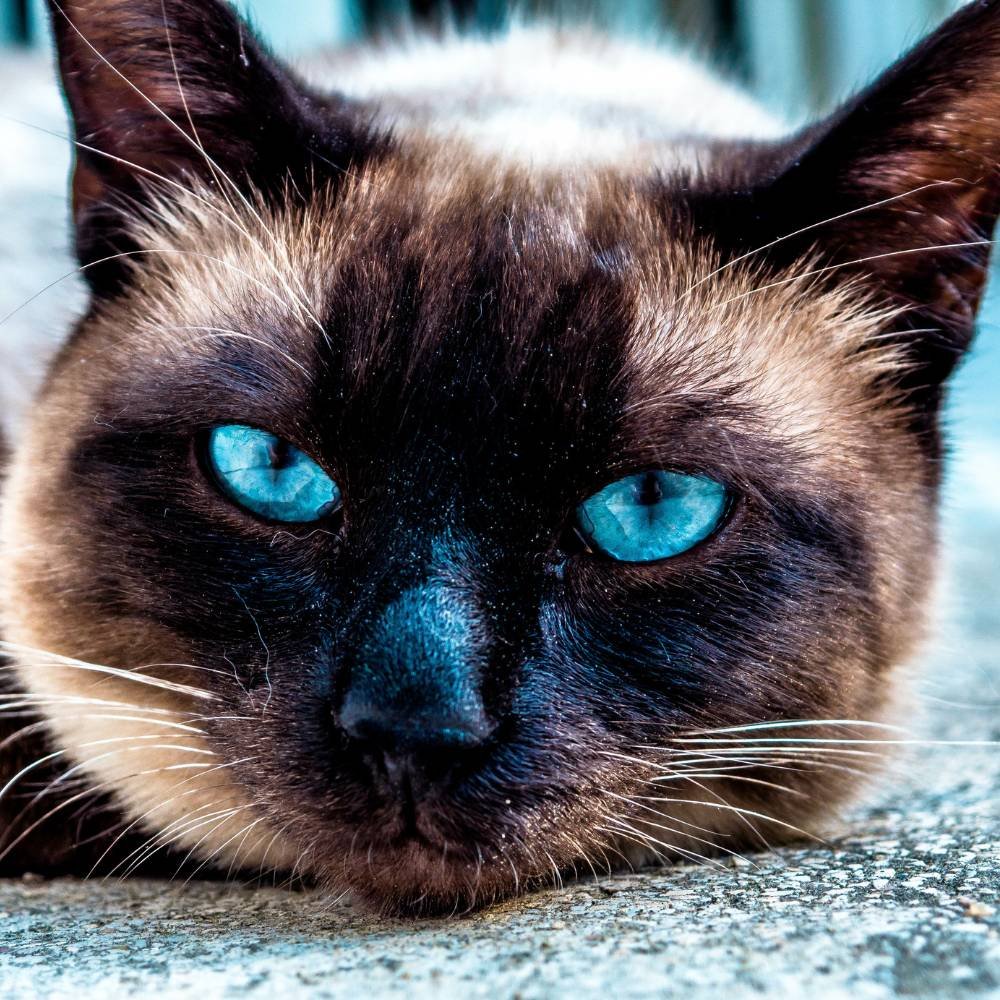
Blue eyes can occur in cats. Eye color eventually changes from the blue that kittens typically have at birth to the color that an adult cat’s eyes will be. Many cat breeds are distinguished by having blue eyes. The blue eyes of these cats are a result of continuous breeding. This post examines the causes of certain cats’ blue eyes. Mainly, genetics is involved.
How Do Eyes Get Their Color?
Iris pigmentation and blue refraction are the two main determinants of feline eye color.
Understanding eye color requires knowledge of fundamental anatomy. The iris pigments range from yellow to red, orange, golden, and copper, and light brown to dark brown. Blue, grey, green, or hazel melanin are absent from irises. The interaction of colors in the various layers of the iris and light refraction are responsible for these hues.
Melanocytes, the cells that produce pigment, are found in two layers of the iris. The top layer of the stroma is made up of haphazardly positioned cells. The epithelium, which has densely packed cells, lies beneath the stroma. The pigment is produced by the stroma and epithelium, although in varying amounts.
All the light that enters the iris are absorbed because of their dense pigmentation. The stroma cells contain a wide range of melanin. Stromal melanocytes with high pigmentation produce dark brown. Blues and grays are produced when stromal melanocytes produce little or no melanin. Greens are present in light brown or amber stromal melanin. Hazel and green-browns are produced by stromal melanin at moderate levels. Gold and orange are produced by lipofuscin.
Why Are Kittens Born With Blue Eyes?
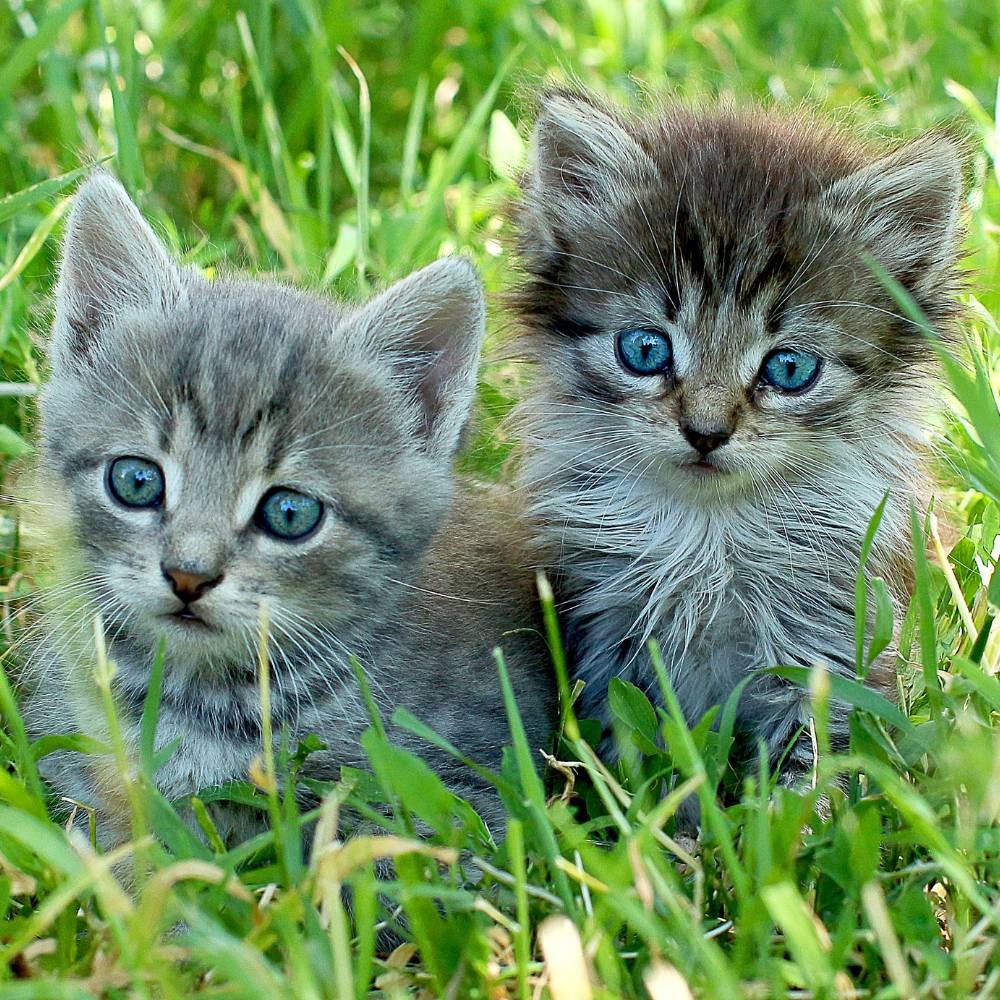
Because the melanin, which gives the iris its color, is missing at birth, kittens’ eyes are blue. When the eyelids open and the eyes are exposed to light, melanin production rises, darkening the color of their eyes. Determining the final eye color could take six to eighteen months after birth. Because a kitten’s eyes are still developing and require time to grow and mature, they are closed after birth. That helps shield the eyes from potential environmental threats. During a cat’s lifetime, illness and injury might also cause variances in eye color.
What Are Blue Eyes?
Although kittens are born with blue eyes, this does not indicate the color of their adult eyes. The blue color may be permanent in a few breeds, but in the majority, it will change to another color starting at roughly six weeks old. The degree of blue refraction determines the hue of blue.
A distinguishing characteristic of color-pointed cats is their blue eyes, which are connected to the temperature-dependent albinism that results in the colorpoint pattern. Breeders must carefully select cats with the best eye color to convey that color to the kittens because the blue tint can vary in hue and intensity.
White cats can also have blue eyes linked to the epistatic white gene, also known as the dominant white gene. It differs from albinism in that it conceals the fur color underneath. The white spotting gene impacts eye pigment if there are white patches around the eyes. For more on blue-eyed white cats, read White Cats, Eye Colors, and Deafness.
One or both of their eyes may be blue in white cats. The breed standard will dictate the color of the non-blue eye. For instance, the other eye is bright orange in white Persians. The odd-eye white cats’ non-white eyes may be green, yellow, or blue in these randomly bred felines.
The Ojos Azules are known for their cornflower blue eyes, but if a kitten inherits two copies of the mutant gene, it is related to deadly abnormalities. The eye color in this breed does not rely on the coat color. The breeding of these cats has ceased. Although they are considered extinct, cats have been discovered with these stunning midnight blue eyes. Therefore, they might still exist.
Occasionally, more blue eye mutations don’t depend on coat color. None of these additional mutations have been purposefully cultivated, and most have been a light blue instead of an intense blue.
In Windellama, New South Wales, Australia, A.M. Schnieder came across a grey bicolor (tuxedo pattern) cat with striking sapphire blue eyes on a backroad. Ojos Azules are not an imported species. Hence this is a naturally occurring mutation in the feral population. If it is the same as the American Ojos Azules mutation is unknown.
What About Odd-Eyes?

Odd-Eyes Or Heterochromia
Heterochromia iridium is the medical word for unusual eyes. It may be inherited, congenital, or acquired through disease, trauma, or specific drugs. Odd eyes refer to having one blue and one other color eye in the context of cats. Epistatic white cats are likelier to have weird eyes, which implies that one of their eyes is blue and the other is either orange, yellow, brown, or green.
In random breeds, the non-blue eye may be yellow, green, or brown, unlike in pedigreed odd-eyed white cats with one blue and one orange/amber eye. White cats exhibit a different type of peculiar appearance: one eye has a tapetum lucidum, and the other does not. These various eye shines can be noticed in headlight reflections or flash photography. Bicolor cats with a lot of facial white might also appear strange.
In cats, heterochromia is frequent from birth. There is no single gene for weird eyes. However, white spotting and masking genes are linked to it. These genes, which also affect iris pigment, stop the development of pigment in the embryo. The eye can be made green, amber, brown, yellow, etc., if some melanocytes in the eye area are still functioning.
The color of the eyes can range from blue with different tints to fully colored, from pale to vivid color, depending on the extent of melanocyte activity. The effect may be gradual throughout the cat’s life, eventually replacing the blue hue with a deeper shade of brown.
The majority of cats with heterochromia have white coats or white patches. On rare occasions, it appears in colorful cats. If present from birth, it can be a congenital defect, mosaicism, or a somatic mutation in some skin and eye cells. These are not inherited, and children do not inherit this type of heterochromia from their parents.
Less frequently, cats of other colors can have peculiar eyes, such as a tortie with one yellow and one blue eye. The eyes’ unique embryonic development may be the cause of this. Perhaps the cat carries a white spotting gene that has impacted the eye but not the hair.
On rare occasions, a sickness or eye injury that has destroyed the iris or one eye is the cause of the different color eyes. The trait cannot be passed on in this situation.
Sectoral Heterochromia and Dichroic Eyes
When different numbers of melanocytes or melanocytes with variable activity levels are found in various regions of one iris, partial heterochromia results, which creates the colored halo or pie slice effects, and dichroic or bichromatic eyes have an iris with two hues. A green iris may have a golden ring surrounding it. Although some pet owners find it highly charming, that is a flaw in show cats.
Less frequently, the iris of an eye may contain a region of a different color, such as a brown patch in a blue or green eye. Some white cats have reportedly experienced that. The white gene only affects a portion of the iris’ pigmentation, not the entire iris’ pigmentation. Affected eyes can be either one or both. If both are involved, a mirror image phenomenon might occur. Since they don’t have unusual eyes in the conventional sense, these cats are known as weird-eyed cats.
Blue-Eyed Cat Breeds
Balinese
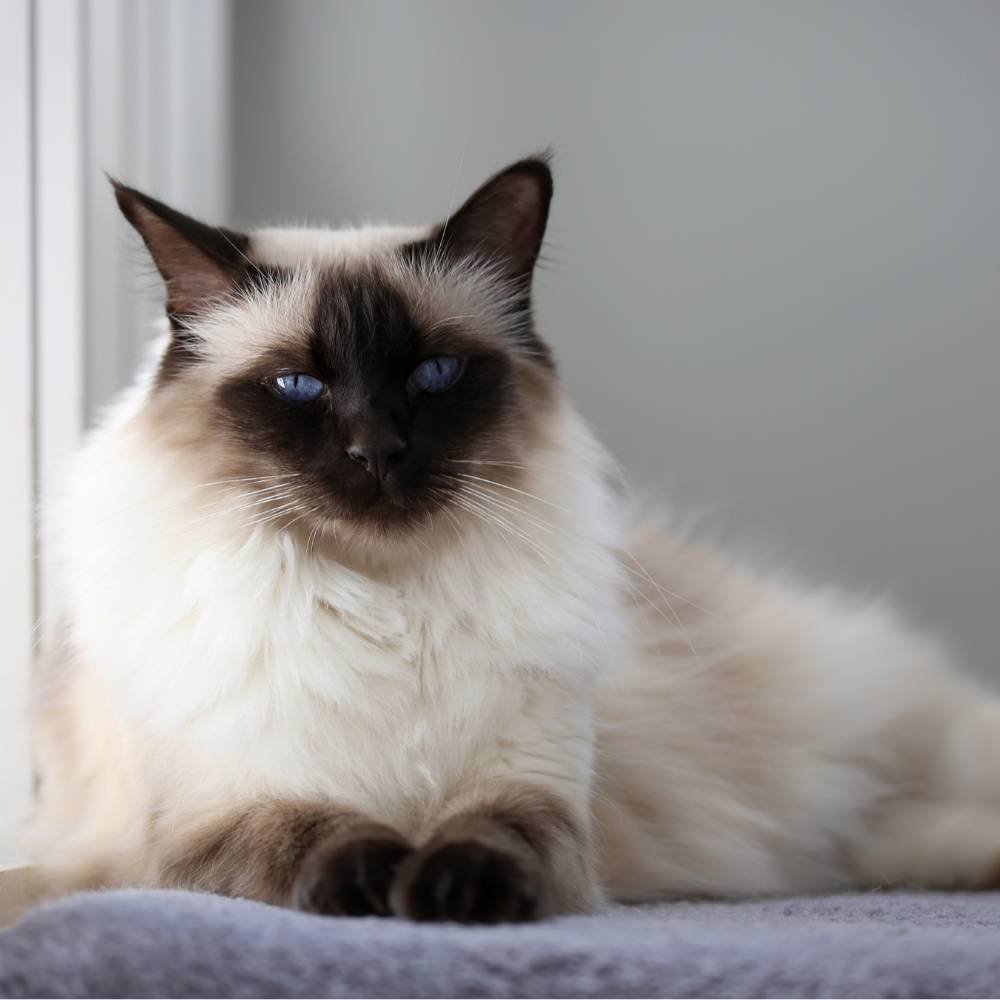
Because the Balinese originated as a longhaired mutation of the Siamese, this breed is frequently confused with its short-haired cousin, the Siamese. The distinctive markings on their long, silky coats are more subdued in color than those of other cats of their breed, who share the same piercing blue eyes and slim physique. They are loud cats, too, like Siamese. However, Balinese tend to have quieter voices.
Birman
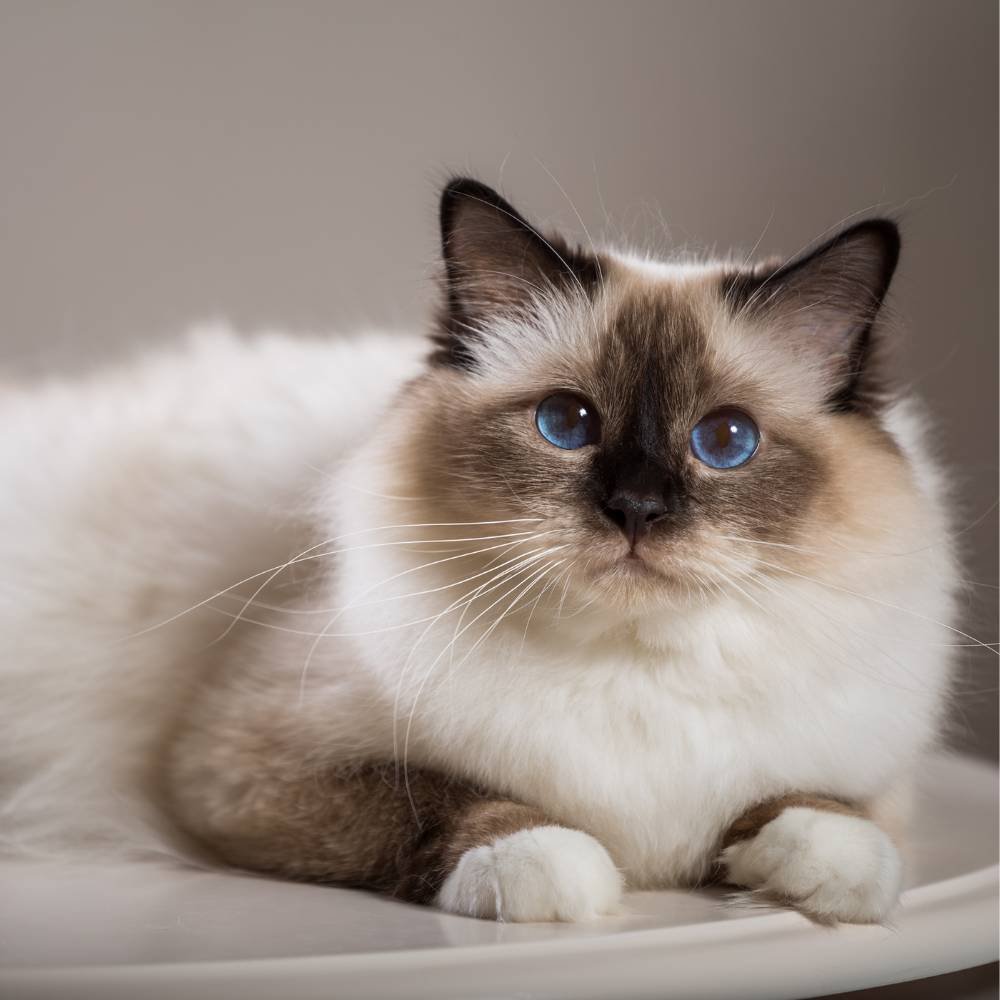
The Birman is yet another colorpoint cat with vivid blue eyes that is friendly and kind. These cats tend to be quiet and communicate quietly in a “chirping” tone, so they can be a suitable choice if you don’t want a lot of noise. Medium- to long-haired, with coats that range in length from chocolate to tortoiseshell, are Birman cats. Their hues include blue, lilac, cream, red, and chocolate. You’ll want to cuddle with them all day because of their fur’s silky softness.
Colorpoint Shorthair
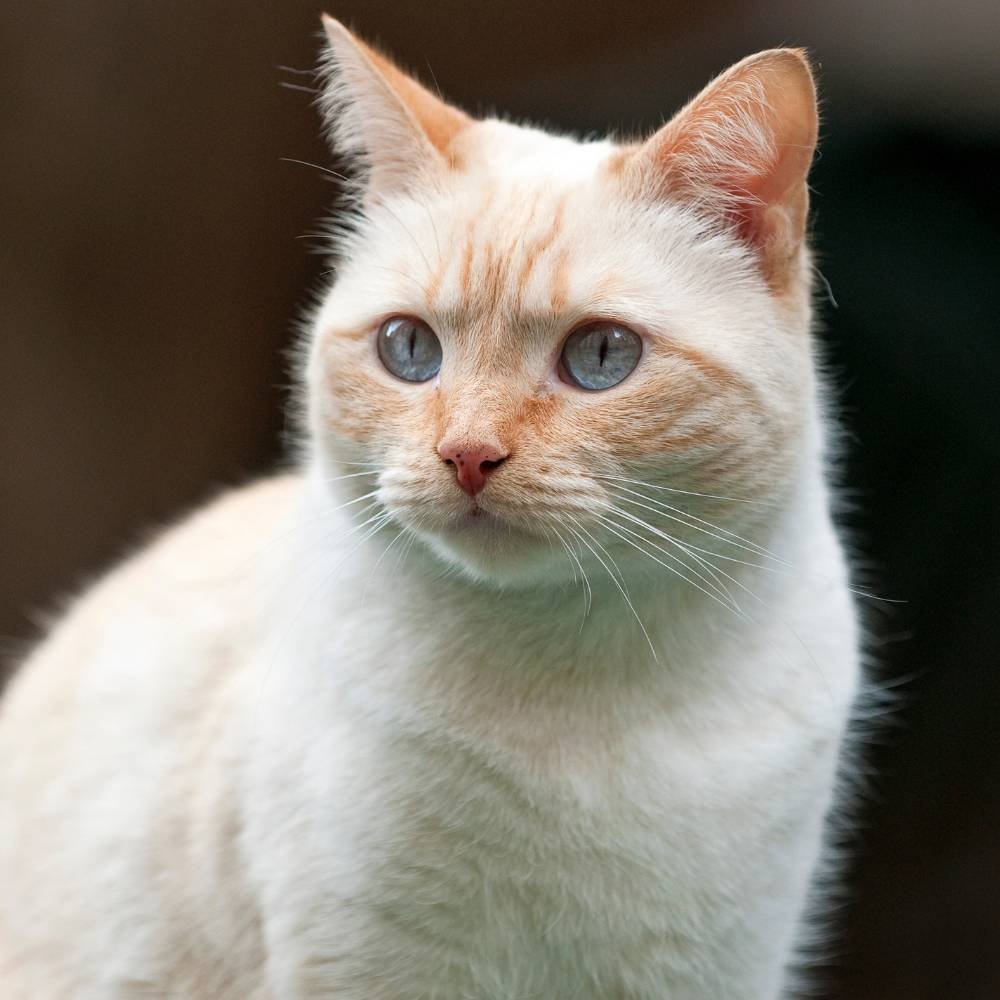
The Colorpoint Shorthair could be mistaken for a Siamese by an untrained eye. Breeders bred a Siamese with a red tabby American Shorthair to create a cat with red points. That resulted in the Colorpoint Shorthair. Other colors of this breed are also possible, including solid cream, blue lynx, chocolate tortie, and a dozen others. The Siamese and Colorpoint Shorthair both have beautiful blue eyes and a propensity for chatting, as does the Colorpoint Shorthair. These cats lack the distinctive Siamese cross-eyed appearance.
Himalayan

The Siamese and Persian breeds were crossed to create the Himalayan breed, also known as the Himalayan Persian or Colorpoint Persian. That resulted in a longhaired Persian with the distinctive coloring of a short-haired Siamese. Since Siamese cats have remarkable deep blue eyes, Himalayan cats are similar to them despite having a wider variety of colors for their long hair.
Javanese
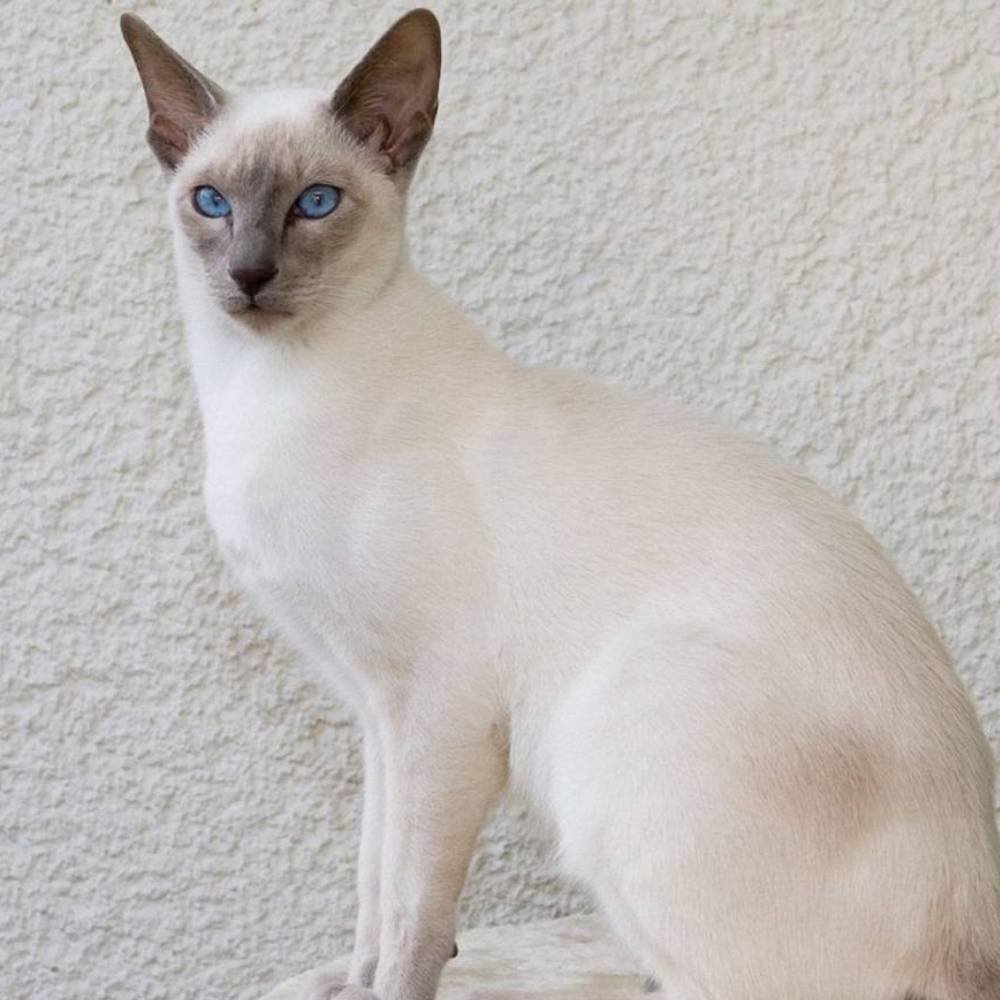
The Javanese inherits its silky, medium-length coat from the parent breeds of the Balinese and Colorpoint Shorthair. Its color points come in various shades, including lynx, tortoiseshell, red, cream, fawn, smoke, and cinnamon. Wide-set ears, a long triangular head, and a fluffy tail that resembles a feather duster are all characteristics of Javanese cats. These friendly, people-focused blue-eyed charmers speak up when they have something to say and use a range of tones.
Khao Manee
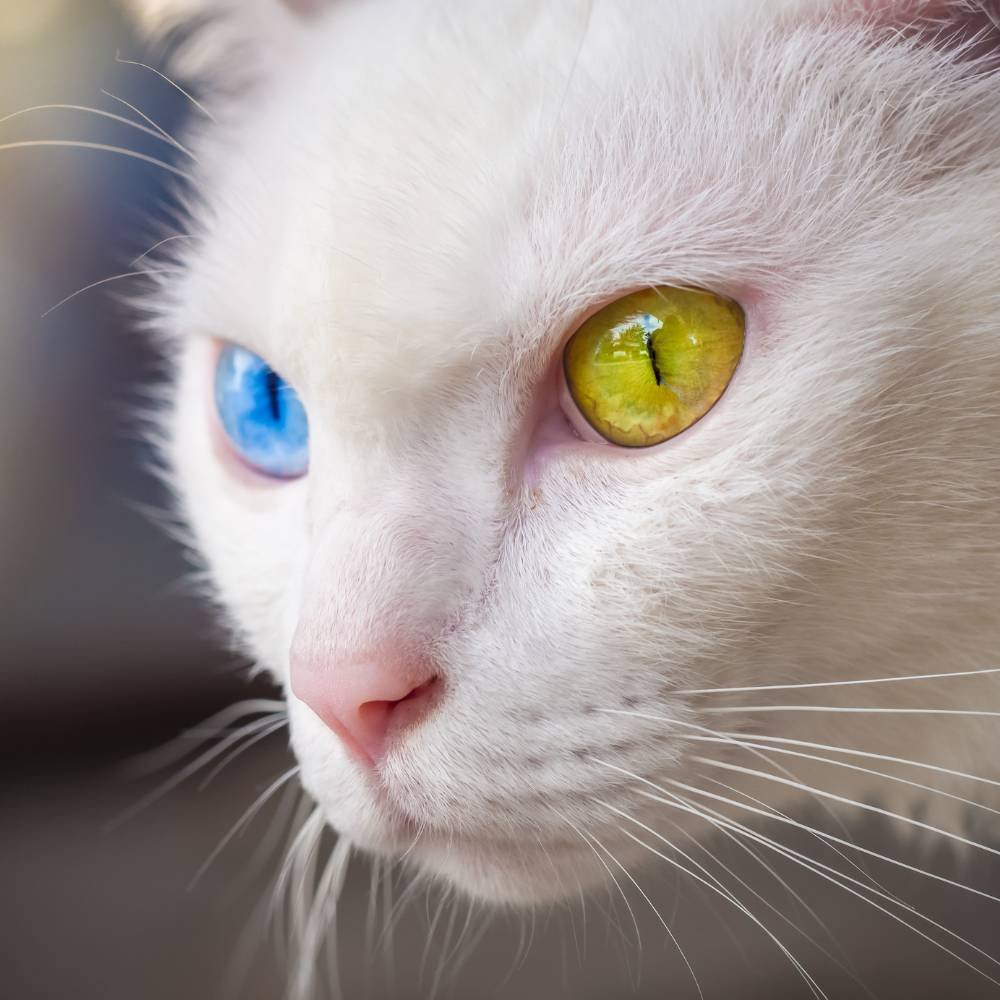
Ancient Thai cat breeds like the Khao Manee are regarded as lucky. Their large, almond-shaped eyes, which occasionally show one of each hue, can be any shade of blue, green, or yellow and glitter against their short, all-white coats. Khao Manees are gregarious, intelligent, and curious felines. Prepare yourself for plenty of cat discussions because they may be rather talkative.
Ojos Azules
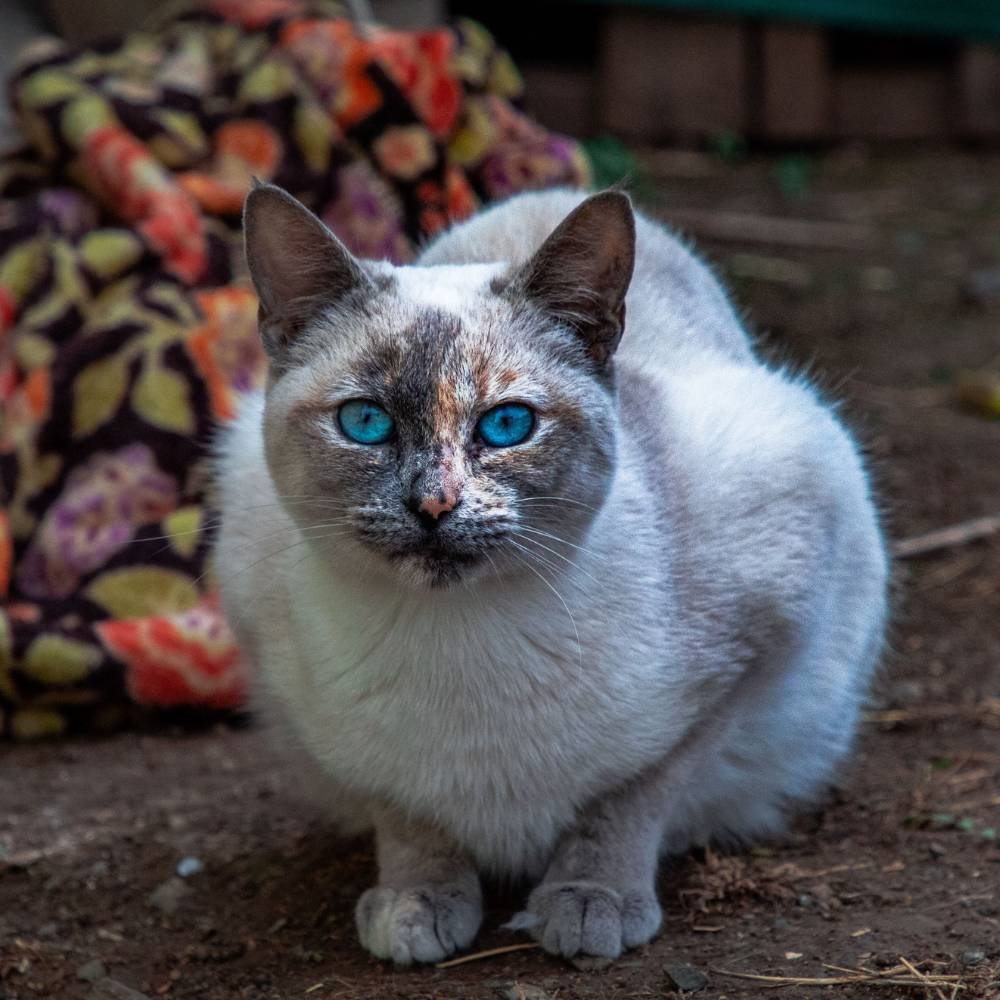
Spanish for “blue eyes” is “ojos azules,” thus it should come as no surprise that this uncommon breed has stunning aqua eyes. According to legend, a blue-eyed feral cat in New Mexico in the 1980s is where the Ojos Azules breed started. The International Cat Association (TICA) officially recognized the breed in 1991. The registration has now had it removed, though. There were only 10 Ojos Azules known in 1992 due to the rarity of this breed, and it is uncertain if any still survive now. Only a depiction of the Ojos Azules is shown above.
Persian
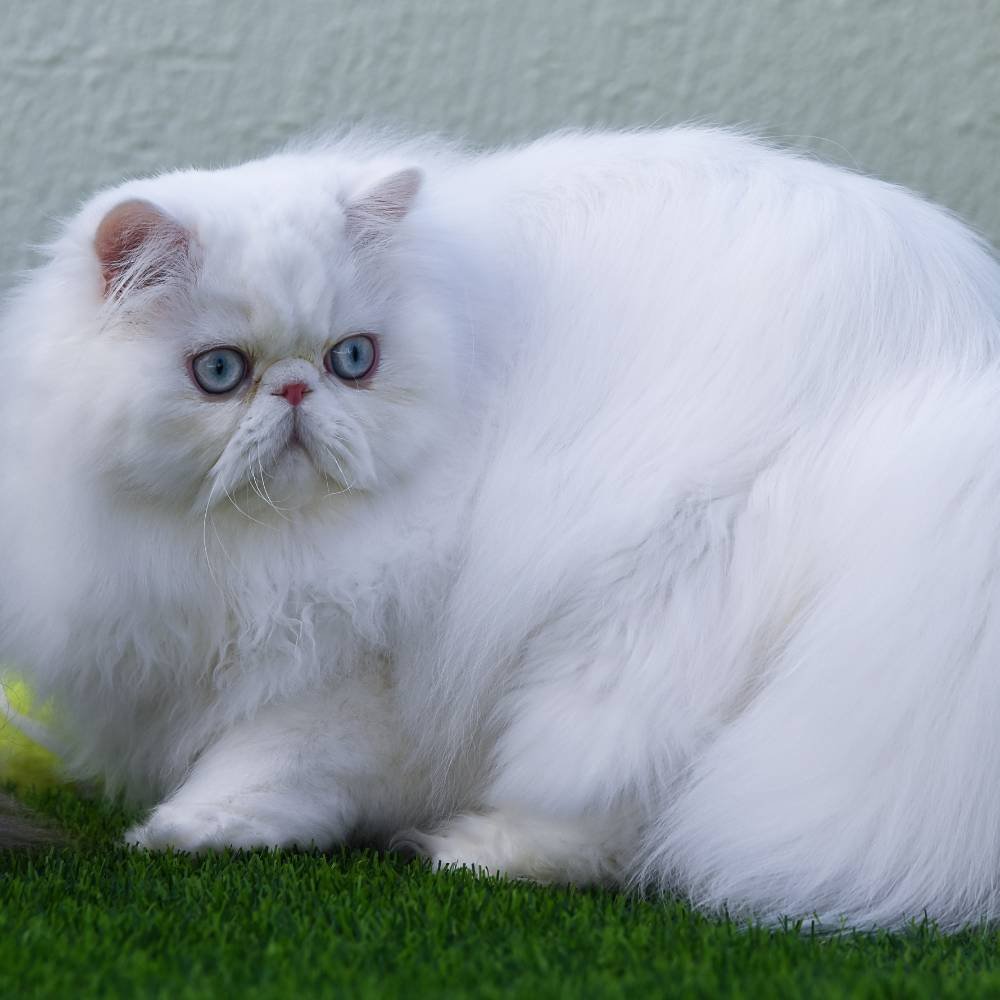
Persian cats have expressive expressions, cute squished snouts, and big eyes that might be deep blue, blue-green, copper, or odd-eyed, which means they have one of each hue. Around sixty hues, including solid (white, black, red, cream, lilac, and chocolate), tabby, calico, and multicolored (like tortoiseshell), are available in their fluffy, thick fur. They are typically more docile, calm, and reserved than some of the other blue-eyed cats on our list. Blue eyes do not come in every color.
Ragdoll

Large cats known as ragdolls have stunning blue eyes and fluffy, semi-long hair. Colorpoints in the hues of seal, chocolate, blue, and lilac can be seen on their coats. Despite their size, Ragdolls are usually calm and content to curl up on the couch with their owners. The breed received its name because they are so docile that they become limp when you pick them up, resembling a ragdoll.
Siamese

The Siamese cat is the most well-known of the blue-eyed cats. Siamese cats are colorpoint, with short hair, round heads, and darker-colored extremities that can be seal (dark brown), chocolate (lighter brown), blue (a cool gray), or lilac (a pinkish gray). Siamese cats can have any of these colors for their extremities. Siamese cats are known for being chatty and friendly animals who enjoy interacting with people. Another method to identify a Siamese is by their cross-eyed appearance.
Snowshoe

The Siamese and American Shorthair were crossed to create the Snowshoe breed, which has the same huge blue eyes and white feet but more profound color points and a tuxedo appearance. These short-haired, tiny to medium-sized cats are incredibly energetic, athletic, and intelligent, which makes them simple to educate. And here’s a fun fact: Snowshoes enjoy swimming in the water, unlike most cats who avoid it at all costs.
Turkish Angora
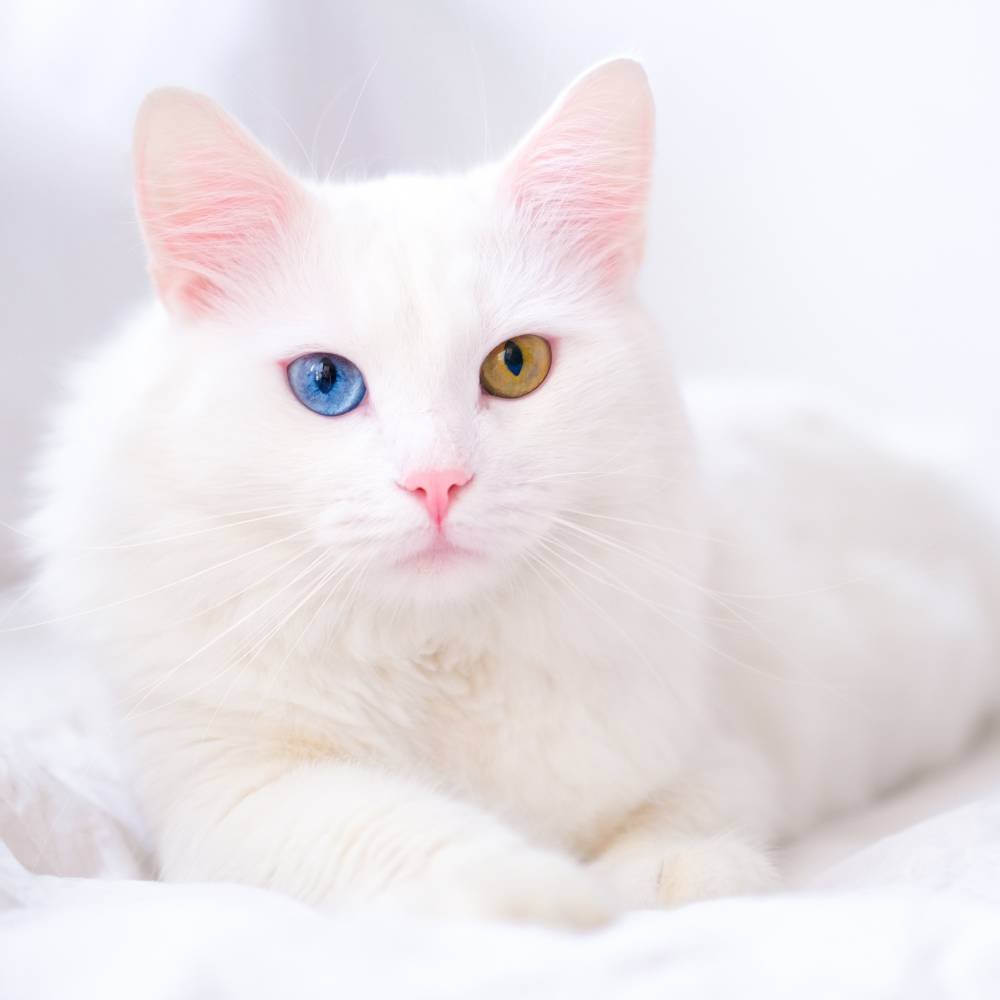
Turkish Angoras, who are well-liked in their home Turkey, have smooth hair that is longer around the neck and a thin, graceful aspect that the CFA refers to as ethereal. They have wedge-shaped heads with broad, wide ears and eyes ranging from sky blue to sapphire. Turkish Angoras can also have green, green-gold, or even two different eye colors. They are not all born with blue eyes.
Tonkinese
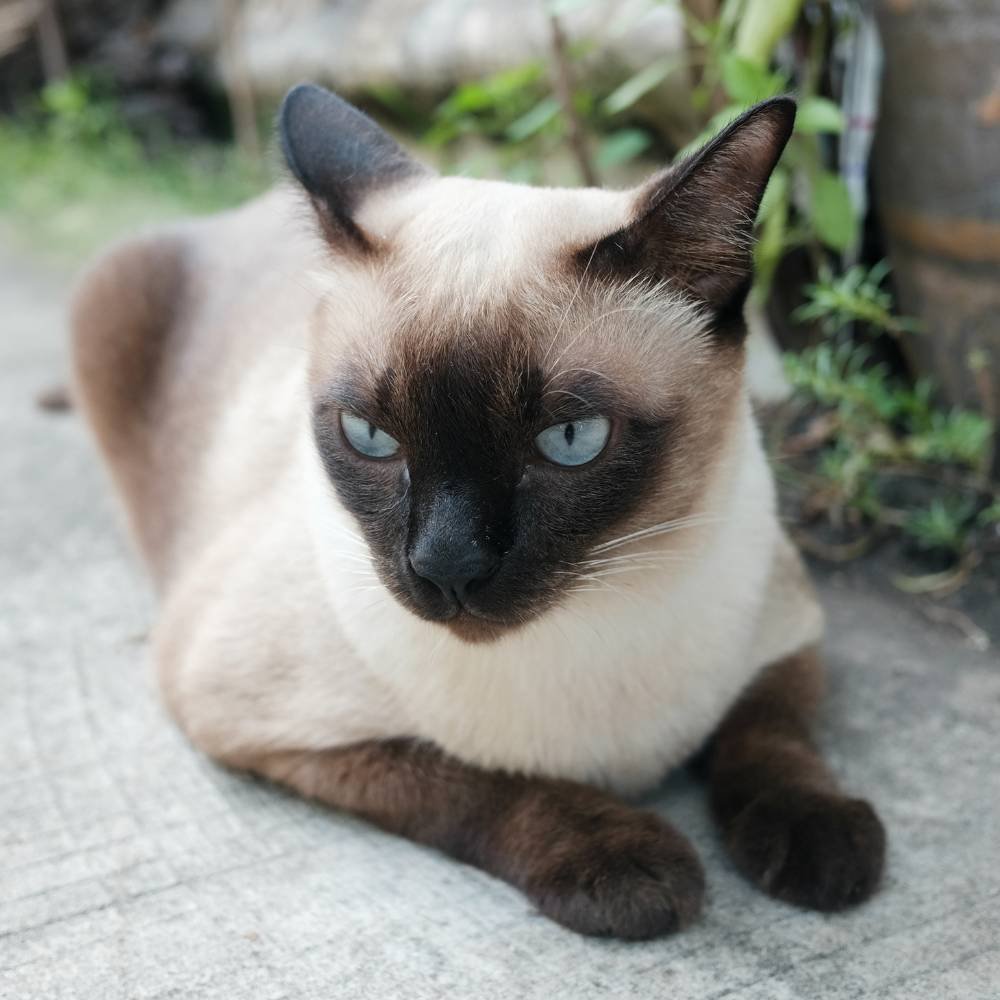
Tonkinese cats have rounded heads, high cheekbones, and captivating wide-eyed aqua-blue eyes. They have short, fine hair close to their bodies and a medium frame that is neither thin nor stocky. These kittens have blue eyes and color points in platinum, champagne, natural, and blue hues. The Tonkinese breed, which sprang from Siamese and Burmese cats, was the first to exhibit aqua eyes in a pedigreed cat.
Conclusion
This article has taught us that cats’ eye colors are influenced by heredity. While rare in certain breeds, blue is a standard eye color in others. Because melanin needs light to produce pigment, kittens are born with blue eyes. Your kitten’s eyes will shift and take on their adult hue once they are open. Blue comes in a variety of shades. Blue and other colors are blended in some people’s eyes. However, like some types of fur and various eye colors, blue eyes are a genetic mutation. The combination of genes that result in those stunning blue eyes is dependent. Are your cat’s eyes blue? Are they a breed with blue eyes, or are they something else? Please share your tale with us. Post your comment below.